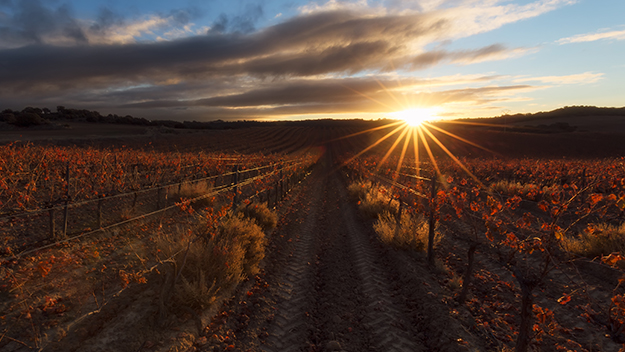Find your winery or vineyard
Infographic of the Denomination of Origin

Change to imperial units (ft2, ac, °F)Change to international units (m2, h, °C)
Cyprus
GRAPE TYPES
From the 1990s onwards, young people and investors reinvented Cypriot viticulture. This new generation broke with old myths and combined Middle Eastern tradition and lifestyle with Western dynamism. Modern wineries were built in the villages of the Troodos Mountains. The phylloxera has never reached the island, so the vines are usually planted on ungrafted rootstock. It was in the 1970s that international grape varieties were introduced to Cyprus.
The vineyards are located mainly in the southwest of the island, in the Troodos Mountains, at an altitude of between 250 and 1,500 metres, making them some of the highest vineyards in Europe. Pitsilia and the northern half of Commandaria have volcanic soils while the other areas are calcareous. The climate is typically Mediterranean, with mild winters and hot summers and low rainfall. The vineyards cover about 8,000 ha, from which about 100,000 hectolitres of wine are produced, most of the vineyard is goblet-trained.
WINES AND WINERIES
With the entry of Cyprus into the EU, the system of classification of appellations of origin was introduced. Five zones are defined for OEOP wines = Oinos Eleghomenis Onomasias Proelefsis. These wines must come from vineyards located more than 600 metres above sea level. They must be made from local varieties, such as the white Xynisteri and the red Maratheftiko, Mavro or Ophthalmo. The designation of origin corresponds to the political subdivision of the four districts Larnaka, Limassol, Nicosia and Paphos. The five areas of the OEOP are Commandaria, Krasohoria Lemesou, Laona Akamas, Pitsilia, Vouni Panayia Ambelitis.
D.O./Valle (wine regions)
Discover more wineries and vineyards for sale in these wine regions in Islands
Subscribe to our mailing list to receive news about wineries and vineyards.







